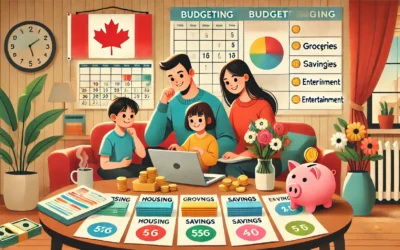Budgeting is challenging, but it doesn’t have to be. Budgeting can actually seem like an overwhelming task if you don’t know what your finances look like or how they work in the first place! We will walk through some basics of managing money wisely so that by next month’s end – when all those bills start coming out-you’ll feel confident about paying them on time because success starts with understanding how to budget.
What is Budgeting?
Budgeting is basically building a plan for your money. It is a plan to direct your income to where it is needed, this could be paying bills or saving for future needs. It involves taking information, organizing it and making decisions based on what’s best for you.
Budgeting Methods
Budgeting is a powerful way to stay on top of your finances. It’s important that you choose the budget method which works best for your financial goals.
In this article, we will go through some of the most common budgeting methods.
Envelope Budgeting
Basically, under this method of budgeting you would use actual cash for your spending needs. There are no debit or credit cards involved. So, if you prefer using cards for making payments then this method may not be suitable for you.
Envelope method works by labeling envelopes by spend categories and then putting cash in those envelopes accordingly. The idea here is to only spend what was placed in the envelope and nothing more on each category. This way you have a limit on what you can spend.
Advantages:
Advantage of using this method is that it can help control overspending. If you have a habit of impulse spending then this method may help bring that under control.
Another advantage is that you know right from the start how much you have available to spend on each category so you know what is left over every time cash is taken out of the envelope.
Disadvantages:
Disadvantage of using this method is that it can limit your spending even if your overspend is justified. There are bound to be times when unexpected expenses arise and this method can cause stress knowing that you don’t have additional funds in the envelope.
It is prudent to have an additional envelope for unexpected expenses that way you are not worrying about not having enough cash in any particular spend category.
Overall, this method is highly effective in controlling overspending if that is an issue.
Zero Based Budgeting
Zero based budgeting starts each budget with zero spend allocated to each category. Expenses are added from scratch every month. The principle here is to justify each expense every time a budget is set-up. If an expense has not earned a place in your budget you won’t spend it. This also means that you have no money left over as each dollar has been allocated, any money left over can be allocated to a rainy day fund.
Under traditional budgeting, once a budget has been set-up it is carried over to the next month with adjustments as required. Zero based budgeting does not allow this method of budgeting, rather every month a new budget is set-up.
Advantages:
Advantage of using this method is that each expense is evaluated and needs to earn a place in the budget. It also means that you may realise that a particular expense is no longer justifiable and needs to be removed. This method forces you to evaluate your expenses.
Disadvantages:
A disadvantage of this budgeting method is that it can be time consuming having to go into this level of detail every month. If you are unable to commit to spending time on building a zero based budget then you can easily lose track of your spending and this method becomes useless.
This method is very powerful as you justify each spend and no other expenses are entertained. You have control over your budget.
50/30/20 Budget
This method of budgeting divides your spending into categories, 50% needs, 30% wants, and 20% savings.
50% needs: These are the expenses that you will incur every month regardless of your spending decisions. These could be rent/mortgage, utilities, groceries, etc.
30% wants: These are the expenses that you don’t need to incur but are nice to have. This could be entertainment such as dining out, cinema, Netflix subscription, or just shopping.
20% savings/goals: This is income allocated towards your financial goals. This could be saving for a vacation, education, wedding, etc.
Keep in mind that this method is not saying that you must spend 50% of your income on ‘needs’. It is the opposite, this budgeting method states that it should be no more than 50% needs, 30% wants, and at least 20% savings.
Advantages:
Advantage of this method is that you have a clear picture of where your income is allocated. You know exactly what part of your income is going towards expenses that you have to incur and how much is going towards expenses that are not necessary. This allows you to adjust wants and savings/goals categories. You may decide that you want to spend less on wants and more towards meeting your financial goals.
Disadvantages:
A disadvantage of this method would be that it allocates a generous portion of income towards ‘wants’. 30% of income towards expenses that are not necessary may be considered wasteful and individuals who already have difficulty controlling their spending could continue down the same path.
Overall, this is a useful budgeting method. It is quick and does not require too much time commitment each month.
There are a number of other budgeting methods to choose from. If you are already using a method that works for you then that’s great, keep it up. If you are new to budgeting and don’t know where to start then one of the budgeting methods discussed may be useful to you.
Budgets are there for your convenience and not the other way around. Make budgeting work for you by using a method that meets your financial needs.



